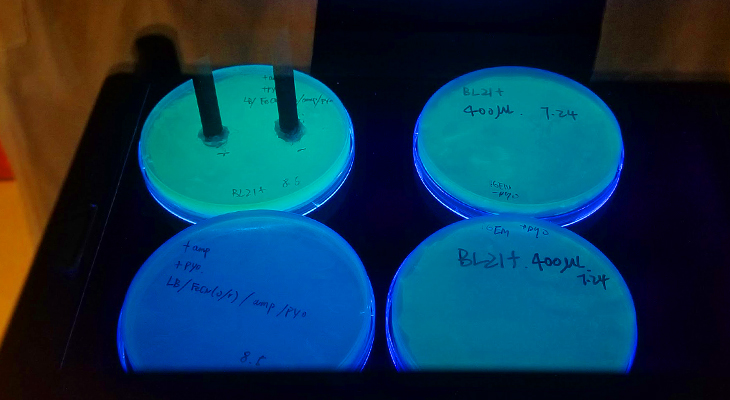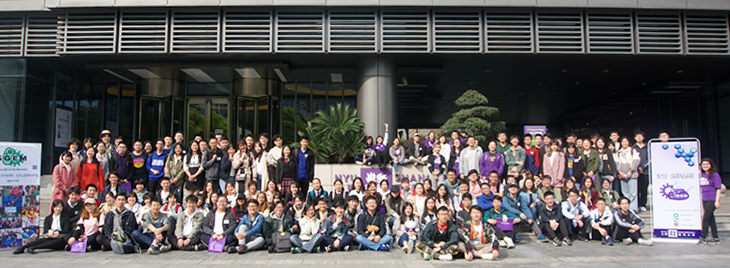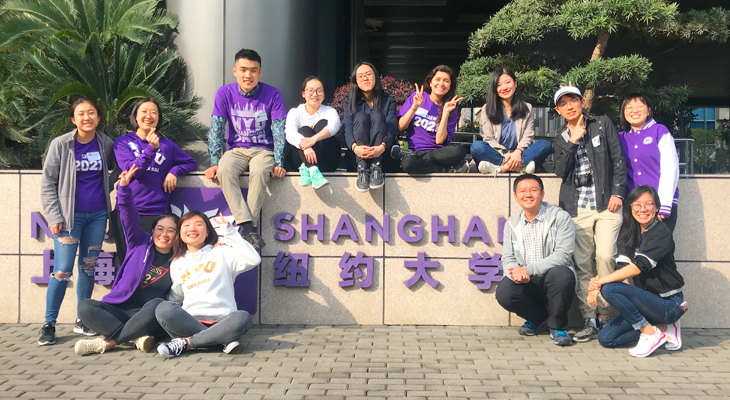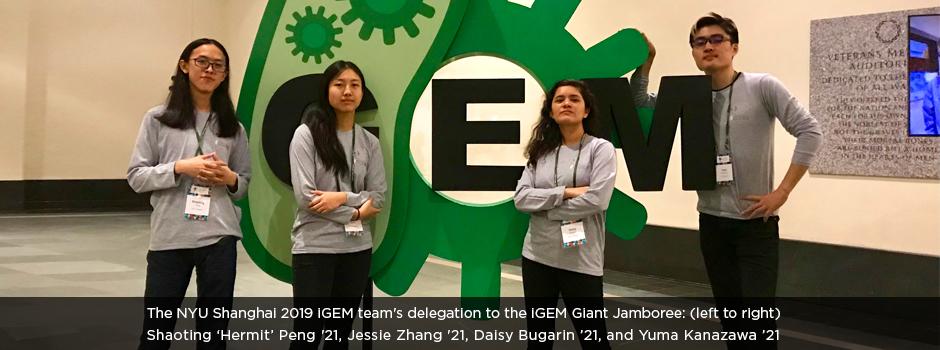NYU Shanghai’s branch of the student synthetic biology research organization iGEM (International Genetically Engineered Machines) recently unveiled discoveries that could revolutionize tissue engineering, a process in which scientists use stem cells to grow new human organs and tissues in the lab. The project, Collagen-Derived Engineering Scaffold (CODES), earned a Silver Medal at iGEM’s Giant Jamboree in Boston from October 31 to November 5, where nearly 7,000 student researchers from around 40 countries gathered to share their ideas and results.
The team’s project stemmed from an initial interest in repurposing food waste, said team leadership member Daisy Bugarin ’21, an economics major from Chicago.
“Shanghai’s trash classification policy was starting to take effect, so that inspired our team to re-evaluate how we use our everyday waste to solve real-world problems,” Bugarin said.
The students ultimately decided to find a novel use for fish scales, since fish is a major part of many Shanghai residents’ diets, and since fish scales have an intriguing property – they are piezoelectric,which means they can spontaneously generate electricity when an external force slightly alters their shape.
By blasting the skin of the Grass Carp – one of the most ubiquitous fish in Shanghai’s restaurants and supermarkets – with low-pitched sound waves, students were able to get the scales to generate low levels of electricity. Building on work by a previous iGEM team from Imperial College London, the NYU Shanghai team realized that they could use the fish scales’ electricity to trigger different growth patterns of the common bacterium E. coli.

The NYU Shanghai iGEM team demonstrates the effectiveness of their “Bio Bricks” - the DNA sequences that they built as part of their project. The team altered the DNA of E.coli bacteria so the bacteria emit a blue-green glow when they convert electrical signals into chemical signals telling cells to change their growth patterns.
The team found that by combining these two innovations, they could significantly change the current landscape of tissue engineering, a field that is paving the way for better organ transplant outcomes.
“Most tissue generation currently uses plastic as a scaffold,” or the material that gives shape and structure to lab-engineered tissue, said team research leader Yuma Kanazawa ’21, a neuroscience major from Japan. “But plastics can’t do anything other than hold the shape of the tissue. The collagen in the fish scales acts as a scaffold, and at the same time, the scales produce electricity that can signal cells to start growing, or to grow into a different type of cell. So the fish scales are like both a switch and a scaffold.”
As part of their research into the ethical and practical implications of their findings, the NYU Shanghai team consulted Kalle Levon, Research Professor of Chemical and Biomolecular Engineering at NYU’s Tandon School of Engineering and a leading light in tissue engineering research. Levon was impressed with the NYU Shanghai team’s research, since both the use of an organic material to support tissue growth and the use of electricity to change cellular growth patterns were completely new to tissue regeneration.
NYU Shanghai’s iGEM team conducted all of this potentially groundbreaking research in the Century Avenue campus’s biology, chemistry, and physics labs. Said team advisor and Assistant Professor of Biology Jungseog Kang, “The whole project is an innovative work that combines knowledge from multiple disciplines. This year’s iGEM team did a great job by tackling a complex task with implications for medicine and environmental sustainability.”
In order to meet the iGEM organization’s goals to create collaborative research communities, the NYU Shanghai team reached out to environmental organizations and waste processing companies in Shanghai to assess the feasibility of repurposing fish scales that would otherwise be thrown away by restaurants and household consumers. In April 2019, the NYU Shanghai team also led a conference for high school and university iGEM teams in the Shanghai region, ultimately hosting over 170 student researchers from schools in 4 Chinese provinces and municipalities at NYU Shanghai’s Century Avenue campus.

20 iGEM teams from high schools and universities in 4 Chinese provinces and municipalities gathered at NYU Shanghai’s iGEM regional conference in April 2019.
This year’s team hopes that NYU Shanghai’s 2020 iGEM team will take up the torch of the CODES project, actually using their innovations to grow new animal tissues in NYU Shanghai’s labs. “This project really works, and if our school’s future teams can execute this project on a level that proves it’s useful in real industry, I think we could definitely win an iGEM grand prize,” said Kanazawa.
“It was really inspiring to see this year’s grand-prize-winning teams’ ability to create ‘full cycle’ solutions that are actually helping whole industries and countries solve real-world problems,” said Bugarin. “These solutions involve entrepreneurship and expertise in a lot of fields outside of biology, so anyone from any major at our school could make really important contributions to future iGEM projects at NYU Shanghai.”

NYU Shanghai’s iGEM Team, led by Daisy Bugarin ’21 and Yuma Kanazawa ’21, includes Shaoting (Hermit) Peng ‘21, Shuxin (Sally) Dong ‘21, Jessie Zhang ‘21, Andrew Du, Jenny Li ‘21, Yongning Lei ’21, Yifan Bu ’22, Yexi Wang ‘22, Sichen Zhu ‘22, Jialu Li ‘22, and Siyi Chen ’22.
More About iGEM
The Giant Jamboree is the culminating event of iGEM’s annual, worldwide, synthetic biology competition for students to use genetic engineering to solve local problems all around the world. Each year, the competition brings together more than 7,000 participants from across the globe to explore and create unique applications of synthetic biology with the mission to bring positive contributions to their communities and society at large. Beyond the technology, participants are evaluated on teamwork, responsibility, entrepreneurship, sharing, safety and more.


